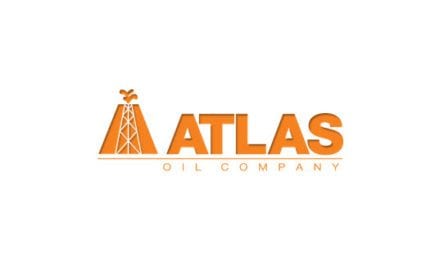Oil Stocks Keep Climbing
- Oil production grew 1.1 mmb/d over last year and a half
- Crude oil price support now $37.65
- Stocks of ULSD post 13th consecutive weekly gain
- Natural gas price objective at $2.39
Sincerely, Alan Levine Chairman, Powerhouse
 Table covers crude oil and principal products. Other products, including residual fuel oil and “other oils” are not shown, and changes in the stocks of these products are reflected in “Total Petroleum Products.” Statistics Source: Energy Information Administration “Weekly Petroleum Status Report” available at www.eia.doe.gov
Table covers crude oil and principal products. Other products, including residual fuel oil and “other oils” are not shown, and changes in the stocks of these products are reflected in “Total Petroleum Products.” Statistics Source: Energy Information Administration “Weekly Petroleum Status Report” available at www.eia.doe.gov
The Matrix
A small decrease in U. S. crude oil production was not enough to reverse the inexorable build in domestic oil supply that has characterized the past year and a half. Oil stocks, including crude oil and petroleum products, are now 1.3 billion barrels. This is a gain of 24 per cent over the period.
Such a large gain, of course, represents impressive growth in crude oil production and comes about despite lower reliance on foreign crude oil. Crude oil output has increased 1.1 million barrels daily over the past eighteen months and crude oil imports have been falling since 2006 when they reached 10.5 million barrels daily. Imports are currently around eight million barrels per day.
Data released by the Energy Information Administration – including an increase of 2.6 million barrels of domestic crude oil in storage – initiated another sharp decline in crude oil prices.
As noted two weeks ago in this weekly memorandum, market watchers are now looking at prices in the ‘twenties very seriously. We noted, too, that prices had to break below several intermediate support levels. Next support below now-broken $39.44 can be found at $37.65. Additional support is at $34.13 and $33.55. The financial crisis low was $33.20, reached during the week ending January 16, 2009.
In standard economic analysis, the cure for lower price is lower price, i.e. lower price should solicit less supply. Lower prices encourage demand and with less supply, prices should rise. This time appears to be different. Changing technology has changed the game.
Despite the sharp decline in crude oil prices, U.S. production continues near record levels. This reflects availability of large shale deposits and lower drilling costs. The marginal cost of production has declined so much that breakeven prices as low as $29 have been reported for some areas of North Dakota. A powerful indicator of emerging efficiency can be seen in reports that “Bakken oil production in North Dakota has fallen less than 2 percent from its peak in December, while the number of oil rigs in the state has fallen by 60 percent.”
Supply/Demand Balances
Supply/demand data in the United States for the week ending August 14, 2015 were released by the Energy Information Administration.
Total commercial stocks of petroleum increased 0.8 million net barrels during the week ending August 14, 2015.
Builds were reported in stocks of distillates, propane, and other oils. Draws were reported in stocks of RBOB, K-jet fuel, and residual fuel oil. Fuel ethanol stocks were unchanged from the previous report week.
Crude oil supplies in the United States increased to 456.2 million barrels, a build of 2.6 million barrels. This was the first build in crude oil stocks in three weeks.
Crude oil supplies increased in three of the five PADD Districts. PADD 1 (East Cost) stocks grew 0.4 million barrels, PADD 2 (Midwest) stocks increased 0.8 million barrels, and PADD 5 (West Coast) stock added 1.2 million barrels. PADD 3 (Gulf Coast) stocks declined 0.3 million barrels and PADD 4 (Rockies) crude oil stocks decreased 0.5 million barrels.
Cushing, Oklahoma inventories increased to 57.4 million barrels, a build of 0.3 million barrels.
Domestic crude oil production decreased 47,000 barrels daily to 9.348 million barrels per day.
Crude oil imports averaged 8.038 million barrels per day, a daily increase of 0.465 million barrels.
Refineries used 95.1 per cent of capacity, a decrease of 1.0 million barrels from the previous week.
Crude oil inputs to refineries decreased 254,000 barrels daily; there were 16.775 million barrels per day of crude oil run to facilities. Gross inputs, which include blending stocks, fell 178,000 barrels to 17.083 million barrels daily.
Total petroleum product inventories saw a decrease of 1.8 million barrels. Gasoline stocks fell 2.7 million barrels; total stocks are 212.8 million barrels.
Total product demand grew 1.302 million barrels daily to 21.397 million barrels per day.
Demand for gasoline increased 19,000 barrels per day to 9.705 million barrels daily. This puts gasoline demand at its third-highest level of this year and seventh-highest level on record, according to industry analysts.
Distillate fuel oil supply gained 0.6 million barrels. Government data show this is the thirteenth consecutive weekly build in distillate inventories. Stocks are 148.4 million barrels. National demand was reported at 3.895 million barrels per day during the report week. This was a weekly increase of 0.350 million barrels daily.
Propane added 1.1 million barrels to supply. There are 93.9 million barrels in storage. Current demand is estimated at 1.010 million barrels per day, an increase of 152,000 barrels daily from the previous report week.
Natural Gas
EIA: Net storage injection is lower than both the five-year average and last year’s builds. The net injection reported for the week ending August 14 was 53 Bcf, down from 65 Bcf the previous week. This compares with the five-year average increase of 54 Bcf for the week and last year’s increase of 86 Bcf. Working gas inventories for the storage week totaled 3,030 Bcf, 488 Bcf (19%) higher than last year at this time and 80 Bcf (3%) higher than the five-year (2010-14) average.
From the week ending April 3 (the beginning of the injection season) through the week ending August 14, net storage injections totaled 1,569 Bcf, or 140 Bcf less than the 1,709 Bcf injected during the same 20 weeks in 2014. During these weeks for the years 2010-14, net injections into storage averaged 1,299 Bcf.
Both consumption and supply rose during the report week.
The spot natural gas futures price has traded in a forty cent range since May, 2015. Support is now found around $2.60. Elliott Wave technicians now think that any rally is corrective and should be sold. A downside objective is at $2.3895 according to this analysis.
Futures trading involves significant risk and is not suitable for everyone. Transactions in securities futures, commodity and index futures and options on future markets carry a high degree of risk. The amount of initial margin is small relative to the value of the futures contract, meaning that transactions are heavily “leveraged”. A relatively small market movement will have a proportionately larger impact on the funds you have deposited or will have to deposit: this may work against you as well as for you. You may sustain a total loss of initial margin funds and any additional funds deposited with the clearing firm to maintain your position. If the market moves against your position or margin levels are increased, you may be called upon to pay substantial additional funds on short notice to maintain your position. If you fail to comply with a request for additional funds within the time prescribed, your position may be liquidated at a loss and you will be liable for any resulting deficit. Past performance may not be indicative of future results. This is not an offer to invest in any investment program.Vol. PH 04 NO. 33
Was this memo helpful? We’d like your feedback. Please respond to [email protected] Copyright © 2014 Powerhouse, All rights reserved.











